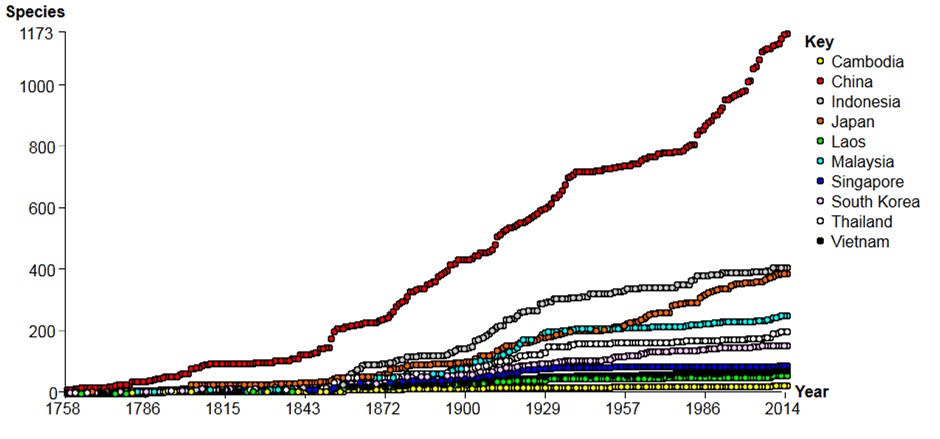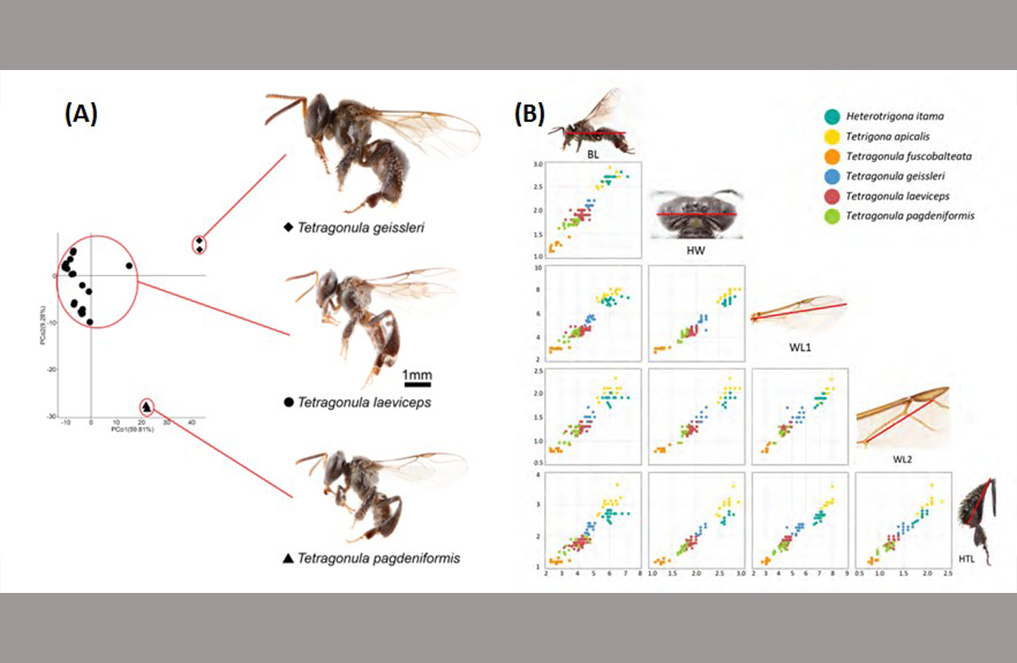Global data for declining bees
NUS biologists are assembling a comprehensive checklist of bee species and their distributions to assess pollinator declines.
Myriad research publications and news articles have identified urgent threats to pollinators including climate change, viruses and exotic parasites, pesticides, and agricultural intensification. Lack of accessible information about the status of the 20,000+ bee species has precluded a global status assessment. The most recent catalogue of world bees dates to 1896, so improved datasets and associated analyses of bee diversity are long overdue. To address knowledge gaps NUS biologists apply newly developed molecular diagnostic and imaging tools to reassess bee diversity, use online biodiversity portals to integrate specimen and literature data online.
In response to bee declines threatening ecosystems and food security, Prof John ASCHER from the Department of Biological Sciences, NUS with help from a global network of bee taxonomic specialists is completing the first comprehensive checklist of valid bee species and their distributions. He is working with the Integrative Taxonomic Information System (ITIS) of the US government to make a global update to the World Bee Checklist. He works with Prof John PICKERING of the biodiversity portal “Discover Life” to integrate bee data online on the species pages. NUS students and regional collaborators across East Asia are completing the first comprehensive monographs on bees from this neglected region.
Bees are reported in many high-impact papers to be declining worldwide, but the reliability of published assessments is questionable in the absence of basic species lists or distributional data for most bees. For example, there has been no checklist available for Asian bee species, and all groups in this region (and others) need to be reassessed using modern tools. Advances in both sequencing technology and in specimen databasing and imaging provide new opportunities to overcome the taxonomic impediment to bee research. This together with the presence of online biodiversity portals facilitate sharing of resulting datasets with the public, making bee data more accessible.
Compilation of basic data on the taxonomic diversity and distribution of bees is just the first step towards understanding these pollinators and addressing threats to them. The completion of the first modern global bee checklist is expected to improve its use as a foundation for various initiatives. These include (i) conservation assessments by the International Commission on Zoological Nomenclature (ICZN) and other conservation agencies, (ii) molecular diagnostic databases assembled by the “Bee Barcode of Life” project, and (iii) biodiversity portals such as “Discover Life” that empower citizen scientists and integrate photos, dynamic identification keys, and other data with the largest and highest-quality specimen datasets.
The work led by Prof Ascher is the first to compile comprehensive data for all bee species worldwide, building on regional and national checklists for selected areas and bee groups. For Asia, no historical baseline exists, so findings about bees in this region are novel. This research work has documented 125 valid bee species in Singapore, including many species new to science, and 909 valid species and 578 other names (most in need of reassessment using modern methods). The 100,000+ literature records, 276,000 specimen records, and other datasets assembled by Prof Ascher collectively provide a comprehensive enumeration of global bee species diversity.
The next step for this research is to publish a “print” version of widely-cited datasets already assembled and shared online. There is also a need to expand to a global scale previously published statistical studies of historical changes in bee faunas, their response to climate change, and their impact on ecosystem services. In addition, the research group plans to publish the first monograph of a tropical Asian bee fauna, documenting all 125 bee species found in Singapore. They also intend to evaluate the faunal turnover caused by habitat fragmentation and the creation of novel urban habitats such as rooftop gardens to sustain and enhance bee diversity and pollination services.

Figure 1. Curves showing accumulation over time of bee species descriptions for selected Asian countries. Note the exceptionally high and rapidly increasing species diversity for China (upper, red dots); diversity patterns for its fauna have never before been reviewed. Source: ASCHER and PICKERING (unpublished).

Figure 2. The species-level taxonomy of Southeast Asian bee species is being reassessed by modern techniques using integrative taxonomy, an approach exemplified here with an example of (A) PCoA plot of genome-wide Single Nucleotide Polymorphisms (SNPS) obtained using Next Generation Sequencing and used to separate three morphologically cryptic stingless bee species for comparison with (B) morphometric analysis of these and related species. Source: Honours theses by Fedeline Angela TJONG and Shao Xiong CHUI.
Reference
Ascher JS; Pickering J. “Discover Life bee species guide and world checklist (Hymenoptera: Apoidea: Anthophila)”, http://www.discoverlife.org/mp/20q?guide=Apoidea_species Draft 46. Published: 2016
